
The 2nd Cavalry Regiment, also known as the 2nd Dragoons, is an active Stryker infantry and cavalry regiment of the United States Army. The Second Cavalry Regiment is a unit of the United States Army Europe and Africa, with its garrison at the Rose Barracks in Vilseck, Germany. It can trace its lineage back to the early part of the 19th century.

Adna Romanza Chaffee Jr. was an officer in the United States Army, called the "Father of the Armored Force" for his role in developing the U.S. Army's tank forces.

The United States Cavalry, or U.S. Cavalry, was the designation of the mounted force of the United States Army. The United States Cavalry was formally created by an act of Congress on 3 August 1861 and ceased as a distinct Army branch in 1942. The name "cavalry" continues to be used as a designation for various specific United States Army formations and functions.

In the United States Army, soldiers may wear insignia to denote membership in a particular area of military specialism and series of functional areas. Army branch insignia is similar to the line officer and staff corps officer devices of the U.S. Navy as well as to the Navy enlisted rating badges. The Medical, Nurse, Dental, Veterinary, Medical Service, Medical Specialist, Chaplains, and Judge Advocate General's Corps are considered "special branches", while the others are "basic branches".
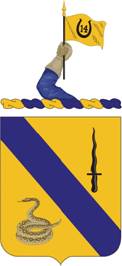
The 14th Cavalry Regiment is a cavalry regiment of the United States Army. It has two squadrons that provide reconnaissance, surveillance, and target acquisition for Stryker brigade combat teams. Constituted in 1901, it has served in conflicts from the Philippine–American War to the Operation Iraqi Freedom and Operation Enduring Freedom in Afghanistan.
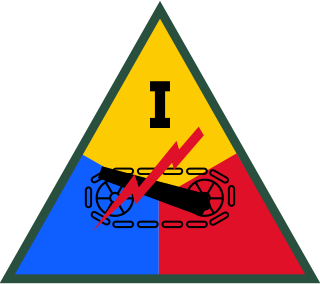
The I Armored Corps was a corps-sized formation of the United States Army that was active in World War II.

The United States Army Armor School is a military training school located at Fort Moore, Georgia. Its primary focus is the training of United States Army soldiers, non-commissioned officers, warrant officers, and commissioned officers. It also trains for equipment handling, including the M1 Abrams, the Bradley Fighting Vehicle, and the Stryker Mobile Gun System. The Armor School moved to Fort Benning in 2010 as part of the United States Base Realignment and Closure program.
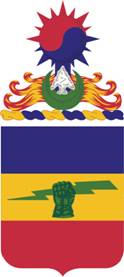
The 73rd Cavalry Regiment is a Cavalry Regiment in the United States Army, first formed in 1941. The three squadrons of the 73rd Cavalry Regiment provide reconnaissance, surveillance, and target acquisition (RSTA) to the Brigade Combat Teams of the 82nd Airborne Division. 3rd Squadron is assigned to 1st Brigade, 1st Squadron is assigned to 2nd Brigade, and 5th Squadron is assigned to 3rd Brigade.
A combat command was a combined-arms military organization of comparable size to a brigade or regiment employed by armored forces of the United States Army from 1942 until 1963. The structure of combat commands was task-organized and so the forces assigned to a combat command often varied from mission to mission.
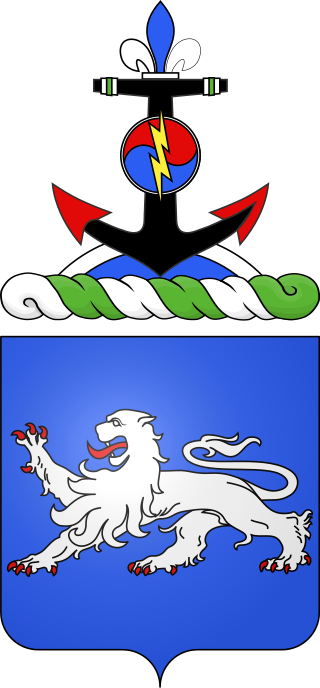
The 68th Armor Regiment is an armored regiment of the United States Army. It was first activated in 1933 in the Regular Army as the 68th Infantry Regiment.

In the United States (US) military, a beret flash is a shield-shaped embroidered cloth that is typically 2.25 in (5.72 cm) tall and 1.875 in (4.76 cm) wide with a semi–circular base that is attached to a stiffener backing of a military beret. These flashes—a British English word for a colorful cloth patch attached to military headgear—are worn over the left eye with the excess cloth of the beret shaped, folded, and pulled over the right ear giving it a distinctive appearance.

This article deals with the history and development of American tanks from the end of World War II and during the Cold War.
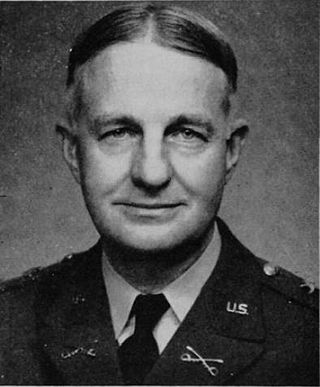
John Knowles Herr was a career American soldier. Herr served for 40 years in the United States Cavalry and participated in the final battles of World War I as chief of staff of the 30th Division, but is best remembered for being the last Chief of U.S. Cavalry. In March 1938 Major General Herr was appointed Chief of Cavalry and became a fierce advocate of traditional horse cavalry troops. He defended cavalry as an independent branch of service and opposed conversion of mounted troops into mechanized or armored units. Herr's affection to horse, "somewhat quixotic" for the period, temporarily made him "a hero and a standard bearer" to generations of officers indoctrinated in cavalry tactics.

The 34th Armor Regiment is an armored regiment of the United States Army formed in 1941.

The 316th Cavalry Brigade of the United States Army is the brigade responsible for the training of U.S. Army Cavalry and Armor officers and non-commissioned officers. The 16th Cavalry Regiment was redesignated as this unit in July 2010. The 316th Cavalry Brigade is currently assigned to Fort Moore, Georgia, in accordance with the Base Realignment and Closure of 2005.

The Infantry Branch is a branch of the United States Army first established in 1775.

The 102nd Cavalry Regiment is a regiment of the United States Army first established in 1913 and which saw service in World War II.

The 104th Cavalry Regiment is a Regiment of the United States Army first established in 1921. Troop A, 1st Squadron is one of several National Guard units with colonial roots and campaign credit for the War of 1812.
The 7th Cavalry Brigade was a brigade of the United States Army, active from 1932 to 1940.

Charles L. Scott was a career officer in the United States Army. A veteran of the Philippine–American War, World War I and World War II, Scott's career began when he graduated from the United States Military Academy in 1905. A notable equestrian, he was prominent in the Cavalry Branch prior to the Second World War and participated in polo, endurance races, fox hunting, and horse shows.



















